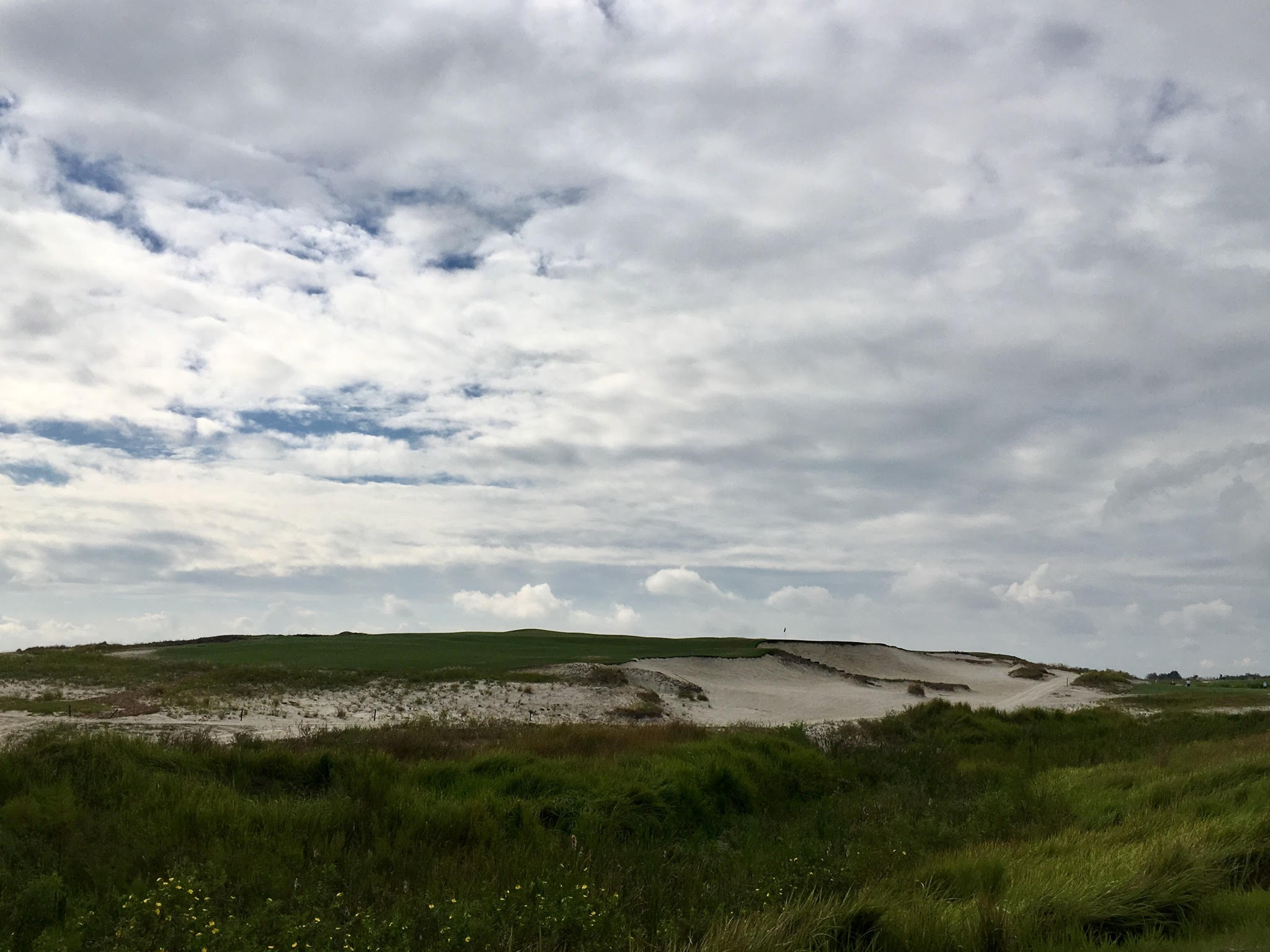I just got back from my first-ever trip to Florida's Streamsong Resort, site to golf's biggest opening this fall: the Gil Hanse-designed Black course.
Using land recovered from a former phosphate mine, the first two courses, designed by Tom Doak and the duo of Bill Coore and Ben Crenshaw respectively, have been met with rave reviews. Both Red and Blue are currently ranked inside the top 15 public courses in the United States -- an incredible feat. Those original pair has been open since 2012 and are well-documented to be great.
The newly opened Black course almost has to meet or exceed its predecessors' billing. It has been perhaps the most highly anticipated public course opening since Cabot Cliffs, the sequel to Cabot Links in Nova Scotia, Canada. Fortunately, I snagged a tee time on the second day the Black was open for public play.The press leading up to the course opening described the course as ‘expansive’ and much larger in scale than the Red and Blue courses, as they run parallel to each other in many places.
A glib verdict on a Sand Valley or Mammoth Dunes is that its expansive grass profile inherently makes the course more fun for all golfers. You don't lose golf balls. Your strategy is yours to choose. Who doesn't like that? An empty view of the mid-handicapper, which I am, is that we're just thrilled to keep hacking. That's just not the case.
After playing Hanse's new creation, I can say I really liked the new Black course, but I feel the ‘incredibly fun’ narrative does a disservice to the average golfer.
The course is everything you’d expect from a modern Gil Hanse design: big, mostly friendly fairways, and creative landscapes and landforms. It’s also walking-only, either with a caddie or carrying your own bag. I chose the latter and had a caddie in my group who was on his third loop around the course. Regardless of who carries the bag, the course is a hike (more so in 90-degree heat of Florida). Playing the black tees at 6,759 yards was more than plenty golf course for me, to the point where I can’t imagine even scratch players choosing to play the green tees, which stretch to 7,331 yards. The transitions from greens to tees aren’t long but in many places require climbing or descending significant hills.
The overall movement of the land is truly something to behold. But the element of the course that will likely receive the most attention is the green complexes. Originally, they were supposed to have a bit of fringe that was going to be barely longer than the cut of the green, but as the course was growing in Hanse and the superintendent chose to save the mowing hassle. Now, the green and the fringe (of sorts) are the same length. This makes the greens even more gigantic than scripted. You’ll also notice sprinkler heads on the greens, which makes putting over and around them interesting.
Old Macdonald at Bandon Dunes could have laid claim to having the largest average green size in North America. However, the greens on the Black course are on HGH (Hanse Growth Hormone). There are greens on the Black course that make greens on Old Mac look like a postage stamp. Not to mention they are wildly undulating.
The prevailing narrative about the Black course, and designs similar in spirit, is big equals fun from tee to green. My argument after playing the Black is that mantra is only universally true if you’re a single-digit handicap. Generous fairways are great, and, in theory, you’d think big greens might be just as accommodating. For me, that wasn't reality on the Black course. The group I played in, with indexes ranging from 9 to 19, had more three- and four-putts than I’d care to count.
Big greens with wild undulation mean, at times, triple-breaking putts from 50 feet on greens Stimping between 10 and 12. Putts routinely break several feet, maybe yards. The length, speed and movement of the average starting putt can be a problem for a middling player. On the short par-4 14th hole, I stood on the silver tees (one tee in front of the black) with my playing partners and watched as one golfer in the group in front of us putted his ball up the false front across the back of the green, then back down to the front, back up to the hole, and had at least two more putts before finally finishing the 261-yard hole with what looked like a triple bogey. That's bad golf, yes, but that's also not that much fun.

My favorite hole might have been the par-3 fifth hole. It plays a beefy 211 yards from the tips and 177 yards a box up, with the tee shot going uphill over a massive waste bunker to an equally massive green that is like a reverse Redan on The Cream AND The Clear. There are numerous humps and hollows all around the left side of the green that makes you feel like you’re walking on the moon. Hopefully, that ground kicks many tee shots toward the green. I managed to hit the green, which was great, but I was left a borderline impossible 20-foot downhill putt breaking at least 5 feet left-to-right. I proceeded to three-putt, then I smirked. While I can appreciate the crazy putts and imagination necessary to not only shape these greens let alone putt well on them, I don’t know that the average 15-handicap is going to feel the same way.
As I was rinsing the sand off the backs of my legs and enjoying a cold towel to the face in the restroom, I overheard two gentlemen have the following exchange:
Guy 1: “That was brutal.”
Guy 2: “That’s one way to put it.”
It's OK for a golf course to be difficult. It can still be a great time and very much enjoyable. However, not every golfer is going to automatically equate the finer points of design with the Second Golden Age's quest for fun.

